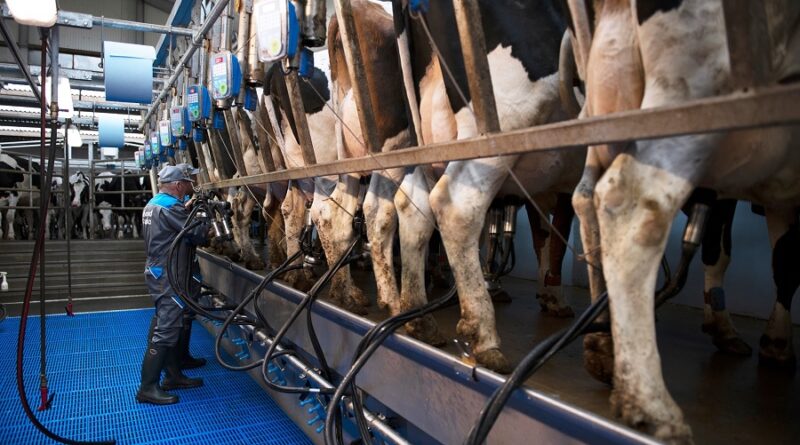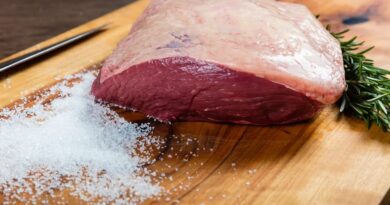What Are The Economics Of Dairy Robotic Milking Systems?
There are more than 35,000 robotic milking systems (RMS) units being used on dairy farms all over the world. The major reasons why dairy producers have milking robots installed are to expand without having to hire more labor and to improve their lifestyles.
What Drives the Profitability of Robots?
 The major factors that affect RMS profitability are the length of their useful life, labor savings, the amount of small milk pasteuriser UK produced per day per robot, and the milk production of each cow. The main disadvantage is the $150,000 to $200,000 capital investment required for each robot that each milk 50 to 70 cows. It is shown by most historical data that milking robots are not as profitable as conventional milking systems. These results may be changed by higher labor costs, improved management skills, and robotic technology advances.
The major factors that affect RMS profitability are the length of their useful life, labor savings, the amount of small milk pasteuriser UK produced per day per robot, and the milk production of each cow. The main disadvantage is the $150,000 to $200,000 capital investment required for each robot that each milk 50 to 70 cows. It is shown by most historical data that milking robots are not as profitable as conventional milking systems. These results may be changed by higher labor costs, improved management skills, and robotic technology advances.
Labour Efficiency
The USDA reported that livestock worker wages increased in 2014 by 3{12c6f031300c4e7dec13f65b59044147da71ba762f1c31726d997b4f964d0d7f} and in 2015 by 4{12c6f031300c4e7dec13f65b59044147da71ba762f1c31726d997b4f964d0d7f}. RMS labor savings that have been reported have varied. Researchers have reports RMS with no savings all the way up to 29{12c6f031300c4e7dec13f65b59044147da71ba762f1c31726d997b4f964d0d7f} savings. Much of the variation might be explained by barn management and design. It has been shown by Farm Management Records that RMS farms in the Upper Midwest averaged 2.2 million pounds of milk for each full-time worker in contrast to 1.5 million pounds for hers of a similar size in parlors. It was shown in our survey that 53 robot farms in Wisconsin and Minnesota that even with similar total labor, the milking time that is saved is used for such activities as improving reproduction, analyzing records, improving animal health, and forage harvesting that is more timely.
Another factor that affects the decision for installing robots is the availability of labor in the future for milking cows. A survey conducted in 2014 indicated that immigrant labor made up 51{12c6f031300c4e7dec13f65b59044147da71ba762f1c31726d997b4f964d0d7f} of overall farm labor (Adcock et al., 2015). The availability of immigrant workers in the future could be reduced if the US passes tighter immigration laws or fewer workers decide to work on farms.
Transitioning to Robots Changes Milk Production
The main driver for milk production changes with RMS is the change in the frequency of milking. It was found by de Koning (2010) that robotic herd production showed a 5 to 10{12c6f031300c4e7dec13f65b59044147da71ba762f1c31726d997b4f964d0d7f} increase compared to milking 2X. However, when compared with milking 3X, there was a decrease in the production of 5 to 10{12c6f031300c4e7dec13f65b59044147da71ba762f1c31726d997b4f964d0d7f}. Our survey showed a 2.8 RMS milking frequency, that ranged from 2.4 up to 3.2. To optimize efficiency, the aim is to have a lower milking frequency during later lactation and a higher milking frequency during early lactation. The following are the main factors that affect herd average and individual cow milking frequency:
- Milking permission settings
- Number of cows on each robot
- Walking distance (significant factor with grazing herds) and barn design
- Cow fetching policy
- Robot free time (when robots are idle)
- Quality and palatability of robot box and partially mixed ration feed
Comparing Robotic Milking Systems With Conventional Parlour Systems
Dutch farm economic performance was compared by Bijl et al. (2007) between farms that use RMS and those that matched conventional farms closely that was milking 2X. Conventional farms were shown to enjoy higher profits because of the higher costs that RMS incurs. However, RMS farms had a 29{12c6f031300c4e7dec13f65b59044147da71ba762f1c31726d997b4f964d0d7f} lower labor requirement that resulted in higher income per worker and more milk production. Their conclusion was that investing in RMS enables more cows to be milked and more milk to be produced by farms using less labor.
The University of Minnesota collected farm management records that showed similar patterns. Herds that used RMS showed higher gross margins and milk products. However, costs were higher as well, which resulted in net farm income that was slightly lower.




